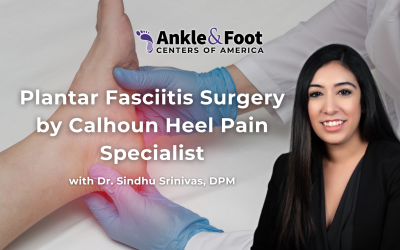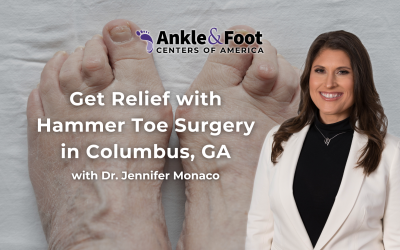Table of Contents
Understanding Big Toe Arthritis
Arthritis, a condition characterized by inflammation of the joints, can affect various parts of the body. However, when it targets the base of the big toe, it’s known as Hallux Rigidus. This specific type of arthritis can significantly impact an individual’s daily life, given the pivotal role the big toe plays in our mobility.
The Big Toe: More Than Just Another Toe
The big toe, often overlooked, is a cornerstone of our foot’s anatomy. Every step we take, every jump, every dance move – our big toe is involved. It bears much of our body’s weight, providing balance and propulsion. When arthritis sets in, the simple act of walking can become a painful challenge.
Why Addressing Big Toe Arthritis is Crucial
 Hallux Rigidus doesn’t just cause pain; it can lead to stiffness, making the toe less flexible. This lack of flexibility, termed as “rigidus,” can hinder the toe’s natural bending motion during walking. Over time, untreated arthritis in the big toe can lead to more severe complications, affecting overall foot health and alignment.
Hallux Rigidus doesn’t just cause pain; it can lead to stiffness, making the toe less flexible. This lack of flexibility, termed as “rigidus,” can hinder the toe’s natural bending motion during walking. Over time, untreated arthritis in the big toe can lead to more severe complications, affecting overall foot health and alignment.
The Path Ahead
Understanding the nuances of big toe arthritis is the first step in addressing it. With the right knowledge and timely intervention, especially from specialists like podiatrists, one can navigate the challenges of this condition and regain foot health.
Anatomy of the Big Toe
At first glance, our toes might seem like simple structures, but beneath the skin lies a complex network of bones, joints, ligaments, and tendons. The big toe, in particular, has a unique anatomy that plays a crucial role in our mobility.
The Metatarsophalangeal Joint (MTP)
 Central to the big toe’s function is the metatarsophalangeal joint, commonly referred to as the MTP joint. This joint is where the first long bone of the foot, the metatarsal, meets the first bone of the toe, the phalanx. The MTP joint is responsible for the toe’s ability to bend, a motion we often take for granted but is essential for activities like walking, running, and jumping.
Central to the big toe’s function is the metatarsophalangeal joint, commonly referred to as the MTP joint. This joint is where the first long bone of the foot, the metatarsal, meets the first bone of the toe, the phalanx. The MTP joint is responsible for the toe’s ability to bend, a motion we often take for granted but is essential for activities like walking, running, and jumping.
Articular Cartilage: The Cushioning Agent
Each end of the bones in the MTP joint is covered by a smooth articular cartilage. This cartilage acts as a cushion, allowing the bones to glide over each other without friction. It’s this cartilage that ensures our toe’s smooth movement, and any damage to it can lead to painful conditions like arthritis.
The Role of Ligaments and Tendons
Surrounding the MTP joint are ligaments and tendons that provide stability and facilitate movement. Ligaments connect bone to bone, ensuring joint stability, while tendons connect muscles to bones, enabling the toe to move.
Why the Big Toe’s Anatomy Matters
Understanding the intricate anatomy of the big toe is vital because it sheds light on how and why problems like arthritis can develop. When any part of this complex structure is compromised, whether it’s the cartilage wearing down or the ligaments getting injured, the entire function of the toe can be affected.
Causes and Development of Big Toe Arthritis
Unlike injuries that have a clear and immediate cause, the development of arthritis in the big toe is often a gradual process. Over time, various factors can contribute to the wear and tear of the joint, leading to the onset of Hallux Rigidus.
The Role of Articular Cartilage Damage
One of the primary culprits behind big toe arthritis is damage to the articular cartilage. This smooth tissue, which covers the ends of the bones in the MTP joint, ensures frictionless movement. When this cartilage wears down or gets damaged, the bones can rub against each other, leading to inflammation and pain.
Bone Spurs: A Compounding Factor
As the bones rub together, there’s a possibility of bone spurs or osteophytes developing. These are bony overgrowths that can form on the top of the bone at the base of the big toe. Not only can these spurs cause pain, but they can also limit the toe’s range of motion, further exacerbating the problem.
Underlying Causes and Risk Factors
Several factors can contribute to the development of big toe arthritis:
- Wear and Tear: Just like any machine, our bodies experience wear and tear. Years of walking, running, and bearing weight can take a toll on the big toe, especially if not supported by proper footwear.
- Traumatic Injuries: Past injuries to the big toe, such as fractures or severe sprains, can lead to damage of the articular cartilage over time.
- Foot Misalignment: Conditions like flatfoot or bunions can place undue stress on the MTP joint, accelerating the wear and tear process.
- Genetic Factors: Some people might be genetically predisposed to developing Hallux Rigidus due to the structure of their feet or a family history of the condition.
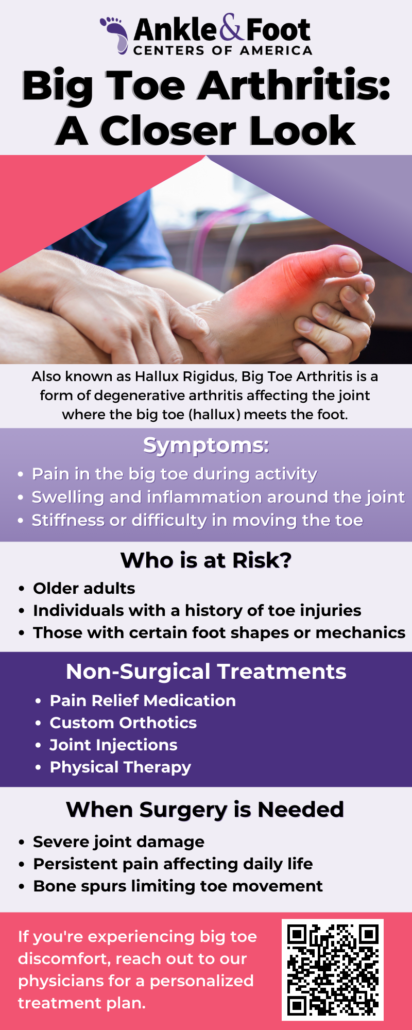
The Importance of Early Detection
Recognizing the early signs of big toe arthritis is crucial. Early intervention can slow down the progression of the disease and provide more treatment options. Ignoring symptoms or delaying treatment can lead to more severe complications and limited treatment choices in the future.
Symptoms and Diagnosis
Big toe arthritis, while gradual in its onset, presents a range of symptoms that can significantly impact daily activities. Recognizing these signs early can pave the way for timely intervention and better outcomes.
Common Symptoms of Hallux Rigidus
- Painful Movements: One of the most noticeable symptoms is pain in the big toe joint, especially during walking or other activities. This pain can be localized on the top of the joint or felt deep within.
- Swelling and Inflammation: The affected joint may exhibit swelling, often necessitating modifications in footwear to accommodate the increased size.
- Visible Bumps: Over time, a bump resembling a bunion or callus may develop on the top of the foot. This bump can be accompanied by redness and further discomfort.
- Stiffness: The big toe may lose its flexibility, making it difficult to bend it upwards or downwards. This stiffness can affect the gait and overall mobility.
Seeking Medical Attention
 If you find it challenging to bend your toe, experience persistent pain, or notice that you’re altering your walking pattern to avoid discomfort, it’s essential to consult a medical professional. Early diagnosis can lead to more effective treatment and prevent further complications.
If you find it challenging to bend your toe, experience persistent pain, or notice that you’re altering your walking pattern to avoid discomfort, it’s essential to consult a medical professional. Early diagnosis can lead to more effective treatment and prevent further complications.
The Diagnostic Process
- Physical Examination: A doctor will typically begin with a physical examination of the foot, checking for visible signs like bone spurs. They’ll also move the toe in various directions to gauge the range of motion and pinpoint the source of pain.
- Imaging Tests: X-rays are commonly used to get a clearer picture of the joint. They can reveal the location and size of bone spurs, the extent of arthritis within the joint, and any loss of cartilage.
The Importance of Accurate Diagnosis
A precise diagnosis is the cornerstone of effective treatment. By understanding the severity and specific characteristics of the arthritis, medical professionals can tailor treatment plans to the individual, ensuring the best possible outcomes.
Non-Surgical Treatment Options
Before considering surgical interventions, there are several non-surgical treatments available that can alleviate the symptoms of big toe arthritis. These methods aim to reduce pain, improve mobility, and enhance the quality of life for individuals with Hallux Rigidus.
Medications for Pain and Inflammation
- Over-the-Counter Medications: Non-prescription pain relievers, both oral and topical, can be effective in managing pain and reducing inflammation. Non-steroidal anti-inflammatory drugs (NSAIDs) are commonly recommended for their dual action.
Cold and Heat Therapies
- Ice Application: Applying ice packs to the affected toe can help reduce inflammation and provide temporary pain relief. It’s essential to ensure that the ice doesn’t directly contact the skin to prevent frostbite.
- Contrast Baths: This therapy involves alternating between cold and hot water baths. The cold water reduces inflammation, while the hot water promotes blood flow and relaxation. This method can be particularly effective when done regularly.
Footwear Modifications
- Shoes with a Roomy Toe Box: Wearing shoes that provide ample space for the toes can reduce pressure on the affected joint, alleviating pain.
- Avoiding High Heels: High-heeled shoes can exacerbate the symptoms of big toe arthritis. Opting for flat or low-heeled shoes can make a significant difference.
- Specialized Shoe Inserts: Stiff-soled shoes with rocker or roller bottom designs can support the foot during walking, reducing the bend in the big toe. Additionally, inserts like Morton’s extension or metal plates can offer added support and pain relief.
Injections for Pain Management
- Corticosteroid Injections: Administering corticosteroids directly into the MTP joint can provide both diagnostic and therapeutic benefits. While it doesn’t address the root cause, it can offer pain relief for several months.
The Role of Physical Therapy
Engaging in physical therapy can help improve the toe’s range of motion and strengthen surrounding muscles. Therapists can provide exercises and stretches tailored to the individual’s needs, promoting better foot health and mobility.
The Journey to Recovery
While non-surgical treatments may not cure big toe arthritis, they can significantly improve the quality of life for many individuals. It’s essential to work closely with healthcare professionals to determine the best combination of treatments and to adjust the approach as needed over time.
Surgical Interventions
When Conservative Treatments Aren’t Enough
For some individuals, non-surgical treatments may not provide sufficient relief from the symptoms of big toe arthritis. In such cases, surgical interventions become a viable option to restore function, alleviate pain, and improve overall foot health.
Types of Surgical Procedures for Big Toe Arthritis
 Cheilectomy: Suitable for patients with mild to moderate Hallux Rigidus, this procedure involves removing the bone spurs and a portion of the big toe bone. This creates more room for the toe to bend, alleviating pain and improving mobility.
Cheilectomy: Suitable for patients with mild to moderate Hallux Rigidus, this procedure involves removing the bone spurs and a portion of the big toe bone. This creates more room for the toe to bend, alleviating pain and improving mobility.- Arthrodesis: Recommended for severe cases where the cartilage damage is extensive, arthrodesis involves fusing the bones of the big toe together. By removing the damaged cartilage and using pins, screws, or plates, the joint is fixed in a permanent position. Over time, the bones grow together, eliminating the joint entirely. While this means the toe will no longer bend, it’s a reliable method to reduce pain.
- Arthroplasty: This joint replacement surgery is typically reserved for older patients with fewer functional demands on their feet. During arthroplasty, the surgeon removes the damaged MTP joint surfaces and implants an artificial joint. This can help relieve pain while preserving some degree of joint motion.
Post-Surgical Care and Recovery
- Pain Management: Post-operative pain is a common concern. Various medications, including opioids, NSAIDs, and local anesthetics, can be prescribed to manage pain. It’s crucial to use these medications as directed and transition off them as the pain subsides.
- Physical Therapy: After surgery, physical therapy plays a vital role in restoring function and strength to the foot. Therapists provide exercises to improve range of motion and ensure optimal recovery.
- Footwear Considerations: Depending on the type of surgery, patients may need to wear specialized footwear, such as wooden-soled sandals or shoes with a rocker bottom, for a specific duration. This helps protect the surgical site and supports the foot during the healing process.
The Promise of Surgical Interventions
While the idea of surgery can be daunting, it offers hope for those who haven’t found relief through conservative treatments. With advancements in surgical techniques and post-operative care, many patients experience significant improvements in their quality of life after undergoing surgery for big toe arthritis.
Conclusion: Trusting the Experts
Big toe arthritis, while challenging, doesn’t have to dictate the quality of one’s life. With the expertise of podiatrists, individuals can navigate the condition, explore treatment options, and find a path to pain-free mobility.
Navigating the Challenges of Big Toe Arthritis
Hallux Rigidus, or big toe arthritis, is more than just a localized condition; it’s a challenge that affects daily mobility, comfort, and overall quality of life. From the initial symptoms to the advanced stages, it’s a journey that many embark on, often with apprehension and uncertainty.
The Power of Knowledge and Timely Action
Understanding the intricacies of big toe arthritis, from its causes to its treatments, is empowering. Knowledge equips individuals to make informed decisions, seek timely medical attention, and advocate for their foot health. Early diagnosis and intervention, as emphasized throughout this article, are pivotal in managing the condition effectively.
The Role of Specialized Care
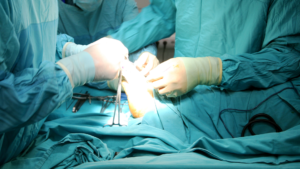 Podiatrists, with their specialized training and expertise, play an indispensable role in this journey. Whether it’s through conservative treatments, surgical interventions, or a combination of both, these professionals offer hope and solutions tailored to individual needs.
Podiatrists, with their specialized training and expertise, play an indispensable role in this journey. Whether it’s through conservative treatments, surgical interventions, or a combination of both, these professionals offer hope and solutions tailored to individual needs.
Final Thoughts
Big toe arthritis, while challenging, is not insurmountable. With the right knowledge, care, and support, individuals can overcome the hurdles of the condition and stride forward with confidence.
Frequently Asked Questions:
What is big toe arthritis?
Big toe arthritis, medically known as Hallux Rigidus, is a degenerative joint condition where the cartilage of the big toe’s main joint deteriorates, leading to pain, stiffness, and reduced mobility.
What causes arthritis in the big toe?
The condition can arise from wear and tear over time, traumatic injuries to the toe, genetic predispositions, or other foot conditions that place undue stress on the joint, such as bunions or flat feet.
How is big toe arthritis diagnosed?
Diagnosis typically involves a physical examination of the foot, assessment of symptoms, and imaging tests like X-rays to get a clear picture of the joint’s condition.
Can I still walk or run with big toe arthritis?
While it’s possible to walk or run with the condition, it might be painful or uncomfortable. Proper footwear, orthotic inserts, and other treatments can help manage symptoms and support mobility.
Are there non-surgical treatments available?
Yes, many non-surgical treatments, including pain-relieving medications, physical therapy, shoe modifications, and corticosteroid injections, can help alleviate symptoms and improve joint function.
When is surgery necessary?
Surgery is considered when conservative treatments don’t provide sufficient relief or when the arthritis is advanced. The type of surgery depends on the severity of the condition and the patient’s needs.
How long is the recovery after surgery?
Recovery time varies based on the type of surgery performed. Generally, patients can expect a recovery period ranging from a few weeks to several months, with physical therapy often recommended to aid in the process.
Can big toe arthritis be prevented?
While it’s challenging to prevent entirely, wearing supportive footwear, managing foot conditions like bunions, and seeking early treatment for toe injuries can reduce the risk or delay the onset.
Does big toe arthritis affect other joints?
While Hallux Rigidus specifically targets the big toe, individuals with this condition might be at risk for other types of arthritis in different joints, depending on underlying causes or genetic factors.
How can a podiatrist help with big toe arthritis?
Podiatrists specialize in foot and ankle conditions. They can provide accurate diagnosis, recommend tailored treatments, and offer surgical interventions when necessary, ensuring optimal foot health and function.

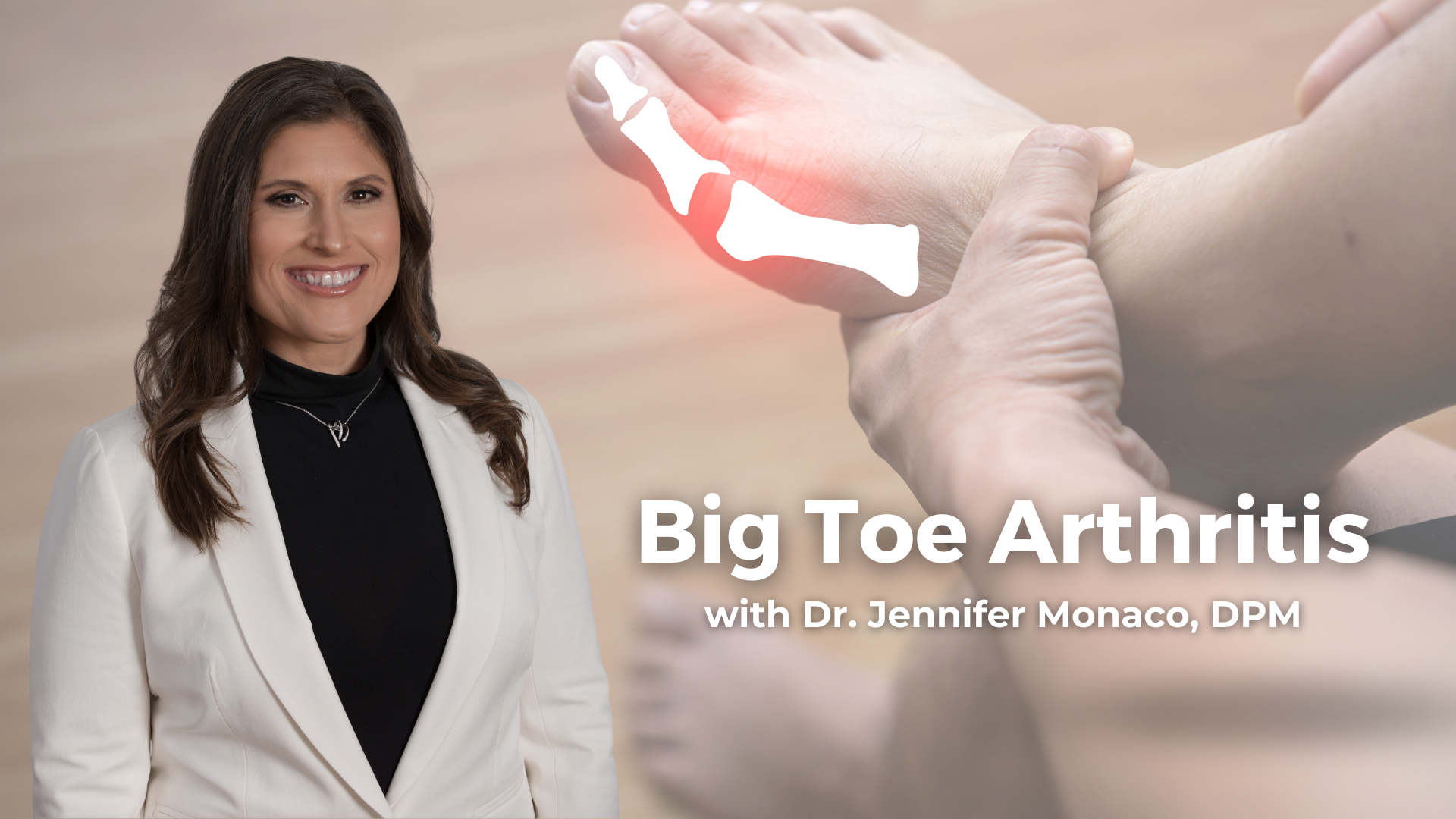
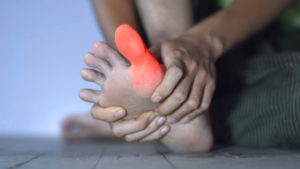 Cheilectomy: Suitable for patients with mild to moderate Hallux Rigidus, this procedure involves removing the bone spurs and a portion of the big toe bone. This creates more room for the toe to bend, alleviating pain and improving mobility.
Cheilectomy: Suitable for patients with mild to moderate Hallux Rigidus, this procedure involves removing the bone spurs and a portion of the big toe bone. This creates more room for the toe to bend, alleviating pain and improving mobility.


